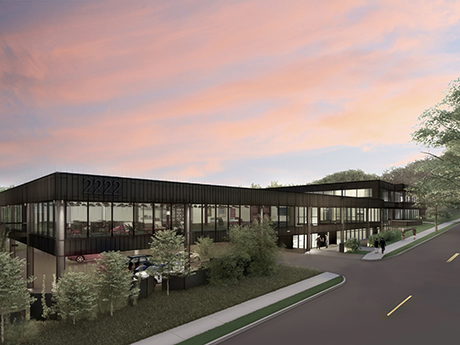Birmingham’s office market is facing many of the same challenges our peer markets are encountering. Lingering economic uncertainties have created a very cautious environment. Most tenants and business owners I speak with are either cautiously pessimistic or cautiously optimistic about the economy.
Regardless of which side is right, economic projections for 2023 have caused a general slowdown in deal flow as decision makers have become more guarded with business decisions and commitment levels.

Is there cause for concern in Birmingham? Historically, Birmingham’s office market has remained stable during challenging times, dodging the extreme highs and lows as markets ebb and flow nationwide. Birmingham’s office market consists of approximately 19 million square feet of multi-tenant inventory across five submarkets, four of which have Class A inventory.
Fundamentals, subleases
As of fourth-quarter 2022, the occupancy rate for Birmingham’s office market sits at 83.8 percent. For the same period over the last five years, the occupancy rate has only slightly fluctuated year-over-year, ranging from 86.1 percent in fourth-quarter 2018 to 83.8 percent in fourth-quarter 2020. The current rate is at 83.8 percent, illustrating consistency throughout a very problematic time for the office sector.
Birmingham’s office sublease inventory is rising, but again, not to the levels some U.S. markets are experiencing. Many of Birmingham’s sublease vacancies are large-block vacancies that have over 50,000 square feet of contiguous space available. From a statistical perspective, it appears that our market offers a lot of space for smaller tenants looking for a “great deal.”
However, in reality, most landlords cannot justify breaking up 50,000-square-foot or larger blocks of space. If you remove these large blocks of vacancy from the market stats, the available space for smaller tenants becomes more limited and occupancy is actually higher.
Flight to quality
The flight-to-quality movement is also trending in the Birmingham market, as many users are moving toward higher quality buildings in more desirable submarkets. Out of the nearly 650,000 square feet of space leased in 2022, Class A transactions accounted for 72 percent of the total.
Rising tenant improvement costs have made leases harder to negotiate and more time-consuming to execute, but rising rental rates are a sliver lining as a result of the increase in deal costs.
To mitigate the higher deal costs, tenants are paying higher rental rates overall, and landlords are benefiting from record-high revenues per square foot on leased space in the Birmingham market.
New office construction remains limited for the foreseeable future in Birmingham.
However, there are several smaller redevelopments and adaptive reuse projects that have recently been completed or are underway that are adding unique and attractive options for users looking to recruit and retain top talent. Several projects worth noting include the Denham Building, 2222 Arlington, the Historic Greyhound Bus Depot, The Hardwick and Urban Supply.
In more good news, the City of Birmingham has recently welcomed several new and/or improved amenities to its downtown core including Protective Stadium, City Walk BHAM and Legacy Arena, all of which are essential to maintaining a healthy environment for corporate office users.
Having been a broker in the Birmingham market for 15-plus years, my long-term outlook for the office market remains positive.
Despite its shortcomings, the Birmingham market remains stable and should show continued resilience to economic uncertainties throughout the remainder of 2023.
— By William Ledbetter, vice president and partner, Cushman & Wakefield | EGS Commercial Real Estate. This article was originally published in the March 2023 issue of Southeast Real Estate Business.


